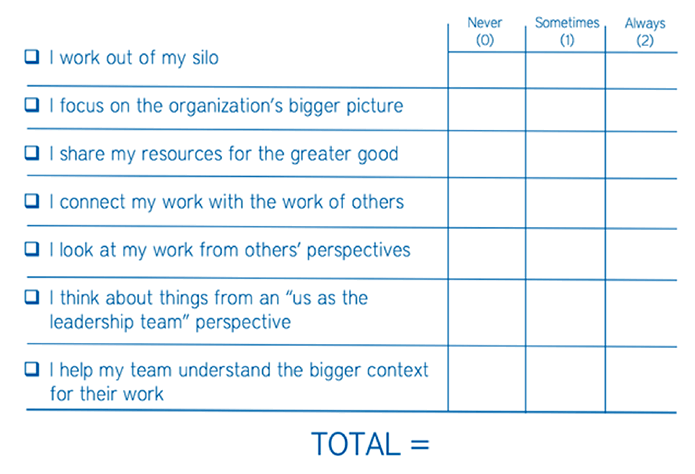Your Checklist for Leading with an “Us” Mindset
One of the things I’m doing with my blog posts this year is to try to provide you with simple, practical and immediately applicable insights you can apply to be a better leader. Most of my posts will touch on one of the three core leadership imperatives I discuss in the new edition of The Next Level:
- Manage yourself
- Leverage your team
- Engage your colleagues
You can read more about how I think about how the three of those work together in this post from last summer, How Strong is Your Leadership Pyramid? Today, I want to share a checklist that can help you do a better job of engaging your colleagues. You can think of it as a self-assessment for how you’re doing on shifting from a “me” mindset to an “us” mindset.
Most leaders have gotten where they are because they have a reputation for getting stuff done. Early in your career (and, unfortunately, late in the career of some leaders), it’s natural to focus on your functional agenda to the point where you ignore the bigger picture and the agenda of others. This is the classic “me” mindset.
As you grow as a leader, your mindset needs to shift from “me” to “us.” The central question that drives the “us” mindset is “What are we trying to accomplish in this organization?” When you have a good handle on that bigger picture answer, you can reverse engineer back from that to determine what the highest and best contribution is from you and your team.
Here are seven other items on the checklist that can help you identify “us” mindset behaviors that you’re either already exhibiting and can double down on or flag behaviors that would help you be better at leading with an “us” mindset. Why not rate yourself using the scale provided and see how you’re doing?

I use this checklist in leadership programs and presentations I deliver for high potential leaders of leaders. It almost always points out something they could do more of to lead with an “us” mindset and get bigger and better things done by engaging their colleagues. What opportunities does it point out for you?
If you liked what you read here, subscribe here to get my latest ideas on how to lead and live at your best.